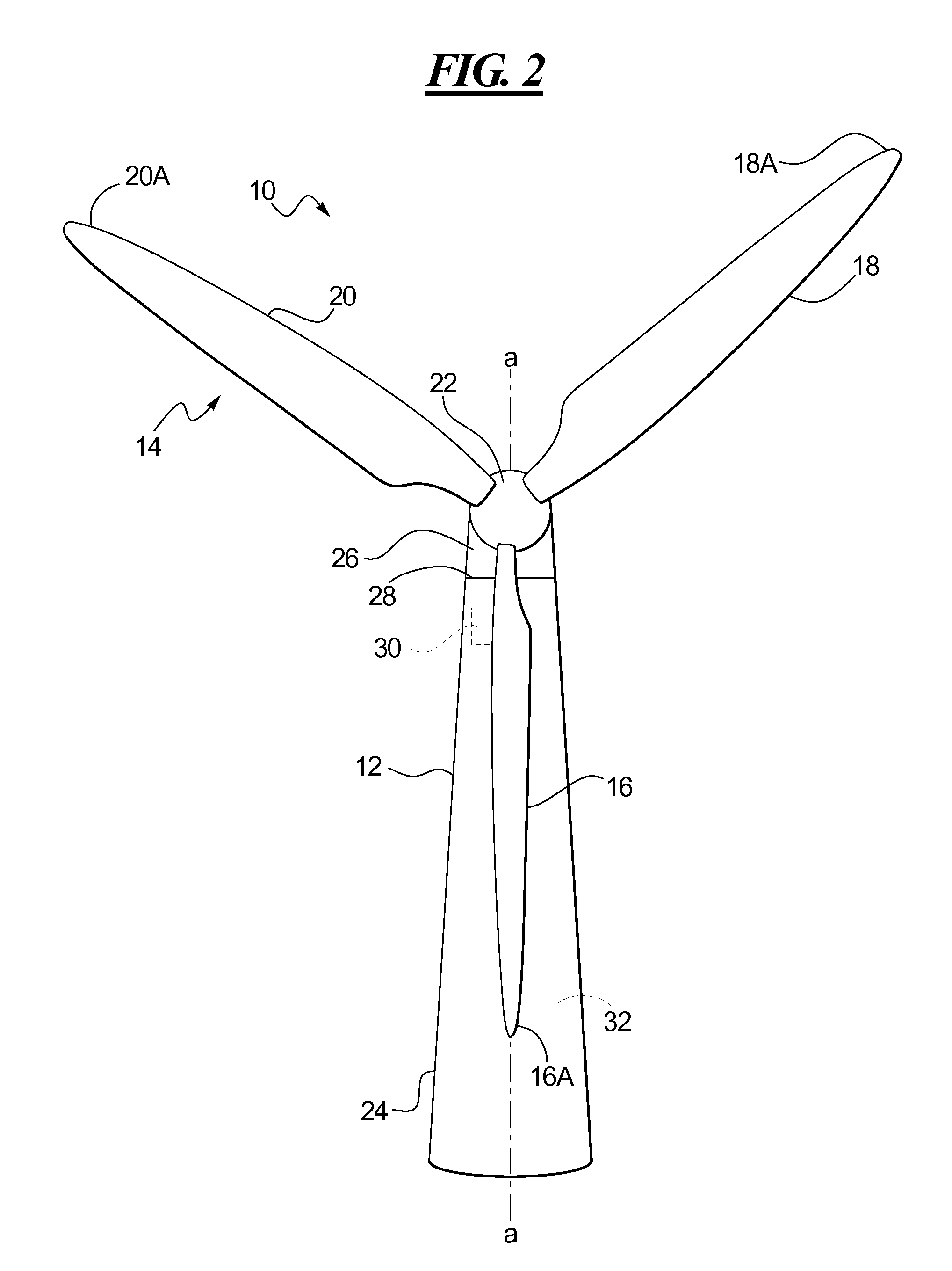Cyclic Pitch Control System for Wind Turbine Blades
- Summary
- Abstract
- Description
- Claims
- Application Information
AI Technical Summary
Benefits of technology
Problems solved by technology
Method used
Image
Examples
Embodiment Construction
[0015]Referring initially to FIG. 1, an exemplary wind turbine 10 is schematically shown in accordance with at least one embodiment of the present disclosure. While all components of the wind turbine are not shown or described herein, the wind turbine 10 may include a vertically standing tower 12 having an axis “a-a”, and supporting a rotor 14. The rotor is defined by a collective plurality of equally spaced rotating blades 16, 18, and 20, each connected to and radially extending from a hub 22, as shown. The blades 16, 18, 20 may be rotated by wind energy such that the rotor 14 may transfer such energy via a main shaft (not shown) to one or more generators (not shown). Those skilled in the art will appreciate that such wind-power driven generators may produce commercial electric power for transmission to an electric grid (not shown). Those skilled in the art will appreciate that a plurality of such wind turbines may be effectively employed on a so-called wind turbine farm to generat...
PUM
 Login to View More
Login to View More Abstract
Description
Claims
Application Information
 Login to View More
Login to View More - R&D
- Intellectual Property
- Life Sciences
- Materials
- Tech Scout
- Unparalleled Data Quality
- Higher Quality Content
- 60% Fewer Hallucinations
Browse by: Latest US Patents, China's latest patents, Technical Efficacy Thesaurus, Application Domain, Technology Topic, Popular Technical Reports.
© 2025 PatSnap. All rights reserved.Legal|Privacy policy|Modern Slavery Act Transparency Statement|Sitemap|About US| Contact US: help@patsnap.com



